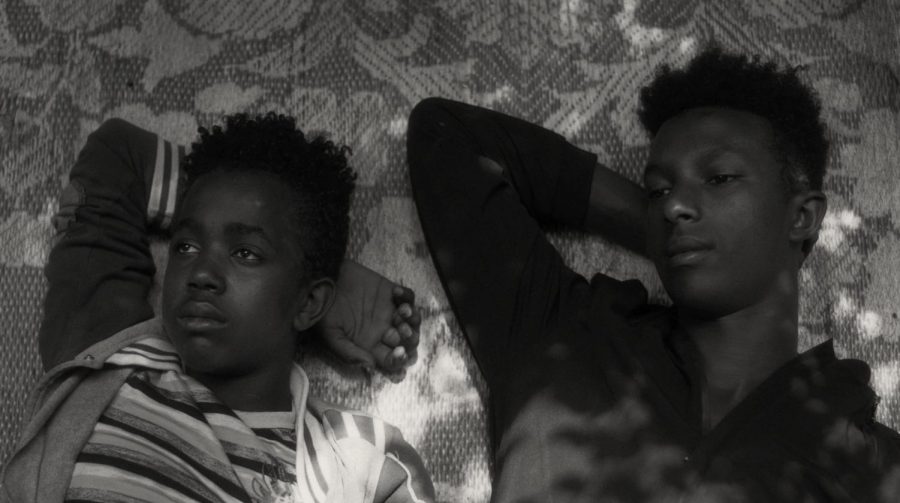‘Faya Dayi’ is a meditative journey to the khat farms of Ethiopia
Eschewing a throughline, Jessica Beshir’s feature documentary debut is one of particular structural and visual inventiveness.
Faya Dayi was released on September 3rd, 2021. While the timeline of the movie is hard to track throughout, its film texture and focus have made it a well-functioning documentary. (Image courtesy of Janus Films)
September 14, 2021
Home is the jumping-off point for an array of passionate thoughts, sparking opinions on a variety of subjects from youth culture to economics — too much for a quick conversation. With her first feature-length documentary, director Jessica Beshir manages to encapsulate all those ideas, as well as the spiritual connection she has to home.
Beshir fled her home in Ethiopia as a child, returning several times over the course of a decade to produce the hypnotic personal film “Faya Dayi.” The film has no singular throughline; instead, it jumps around between a series of smaller stories that together form a portrait of Beshir’s home. The connecting piece between the stories is khat, a stimulant leaf which, despite its deep spiritual roots, is known as Ethiopia’s largest cash crop. Embracing the rich history of khat, Beshir creates a film that, with its spiritual vignettes, is less like the fly-on-the-wall observational films of Frederick Wiseman and more in the vein of Khalik Allah’s “Black Mother.”
According to Beshir, no one person can speak for all the space that is her hometown community. The flurry of narrators work in tandem with the various vignettes to provide visual and audial representation of all members of the community, from farmers to youth to elders.
“I was envisioning this film as an amalgamation of these voices that are emanating from that space,” Beshir said in an interview with WSN. “I really wanted to invoke these various voices that embody those diverse experiences.”
More prominent in the film is its low-key score, which adds a pensive quality to the shots it graces. Scenes of the khat harvest are not drawn-out so much as they are slowed down, giving the viewer time to see all the details of the process. These are the details that make up Beshir’s home. According to Beshir, the rhythmic score mirrors the loop that is the khat farming process. The score mirrors what’s happening on-screen, as the way khat workers move is similarly circular and repetitive.
“The loop aspect was exactly what I was looking for, because in the film that process that you see, from harvest to market, that goes on a loop for 24 hours,” Beshir said. “That happens every single day non-stop.”
Beshir follows the khat from where it is harvested in fields to where it is bundled by a new set of workers who have their own process. One moment captured along the khat’s journey that most explicitly explores the film’s political and economic interests: A boy and a man are awaiting more khat to bundle. The man expresses his sorrow for the boy, telling him he is too young, and how he’d never wish this job upon him. In this exchange, Beshir’s conditions of her homeland become apparent. Boys used to be able to live their lives like those in the many lyrical sequences about playing in the water. Now they are forced to enter the machine that is the cash crop industry. This is not the home Beshir nostalgically attempts to recreate in those aforementioned sequences.
The film’s contrast between these two types of sequences — nostalgic portraits of youth and frank glimpses at how khat business governs town life — reveal Beshir’s interests. These sequences are more than surface-level. The children playing are nostalgic, aware of the past. Scenes that meticulously demonstrate the khat process, on the other hand, depict a bleaker present moment
The storyline that gives the film the greatest sense of momentum and conclusion is the one of Mohammed, a 14-year-old boy whose father is addicted to khat. One could assume that he, as a child growing up in rapidly changing times, is the character whose story most resembles Beshir’s. At the end of the film, he leaves like she did. He waves to cars in search of a ride, but ends up quietly walking ahead out of frame — an open ending that keeps the concerns of the community in mind. The whole film is a portrait of the townsfolk as it is now, and that story is unfinished, just like this boy’s.
Contact Sebastian Zufelt at [email protected].



























































































































































